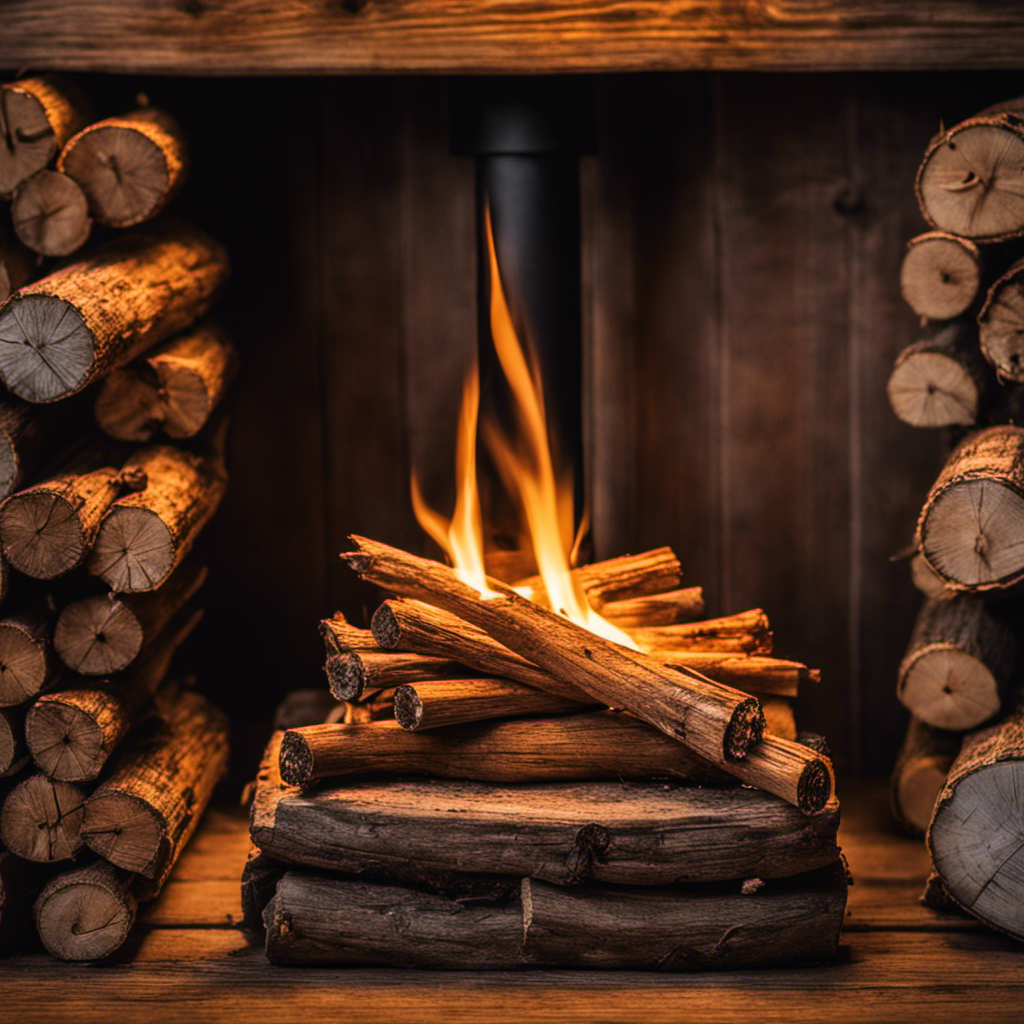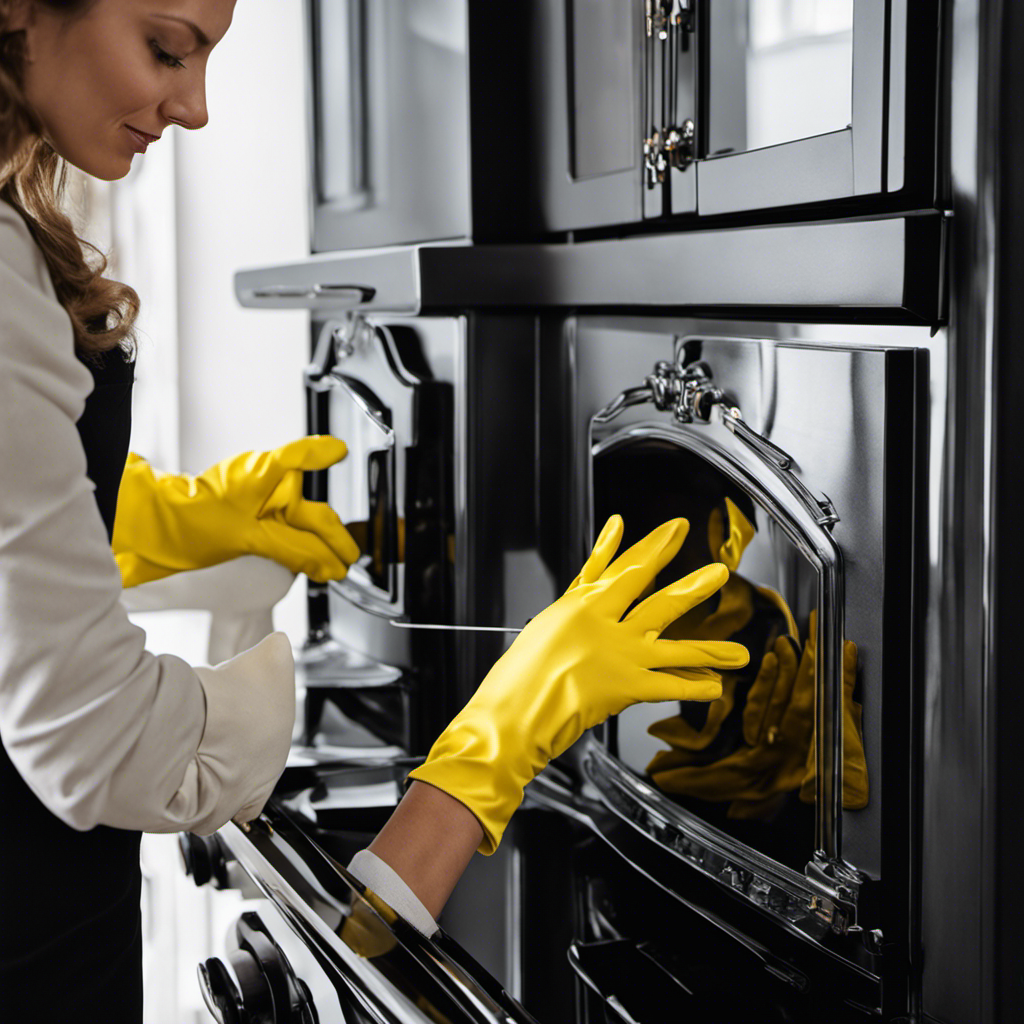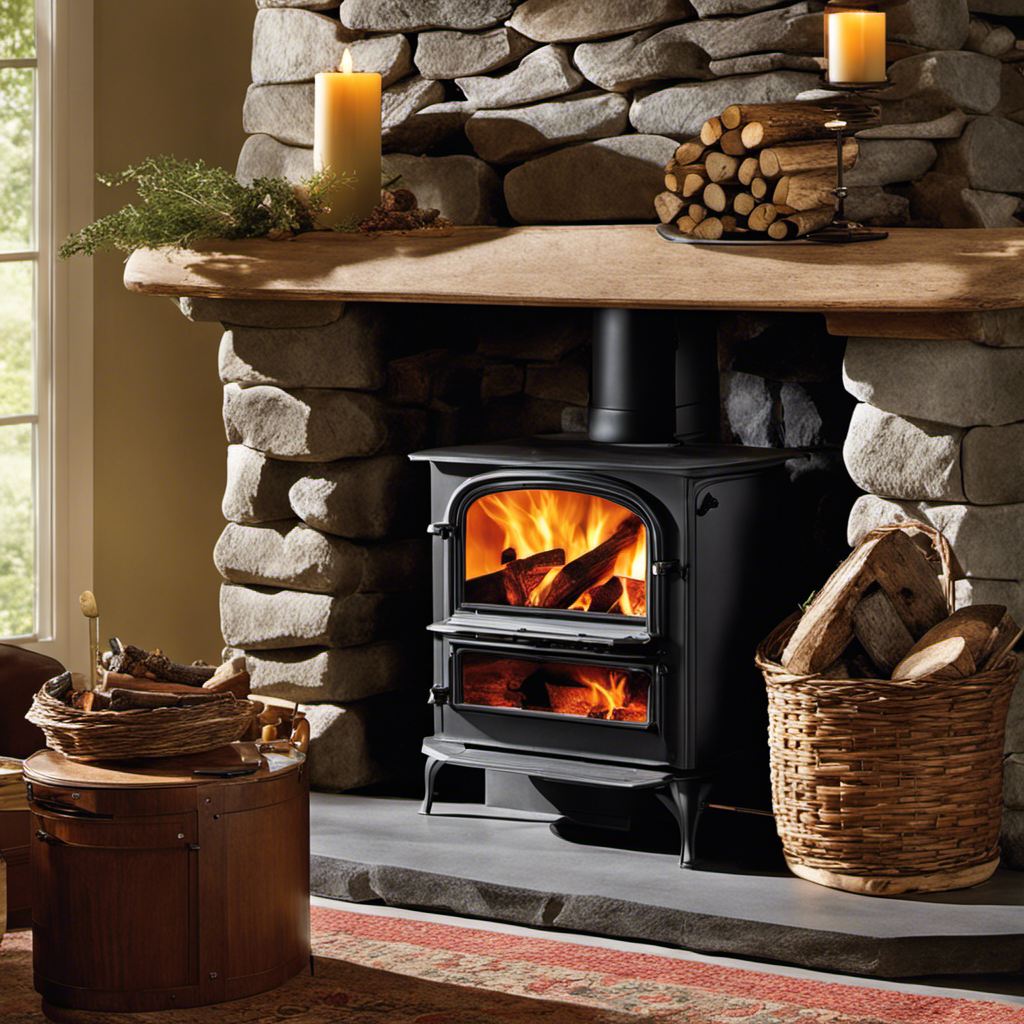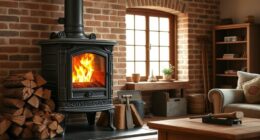As an individual with a profound respect for the outdoors, I’ve honed my skills in igniting a fire in an outdoor wood stove. By choosing the appropriate wood, ensuring adequate preparation, and diligent upkeep, you’re guaranteed a warm and inviting atmosphere on each occasion.
In this article, I’ll guide you through the step-by-step process of igniting and controlling a fire in your wood stove. Get ready to embrace the crackling flames and embrace the beauty of a well-lit fire.
Let’s dive in!
Key Takeaways
- Hardwoods like oak and maple provide sustained heat and burn longer.
- Softwoods like pine and fir ignite quickly and produce a high flame.
- Dry firewood with a moisture content of around 20% or less burns more efficiently.
- Proper firewood storage and positioning of the stove are essential for an efficient and long-lasting fire.
Choosing the Right Firewood
I’m making sure to choose the right firewood for my outdoor wood stove. Proper firewood storage is essential to ensure an efficient and long-lasting fire. Different types of firewood have varying characteristics that can affect their burn time and heat output.
Hardwoods like oak and maple are dense and burn longer, providing sustained heat. Softwoods like pine and fir, on the other hand, ignite quickly and produce a high flame but burn faster.
It’s important to consider the moisture content of the firewood as well. Dry firewood with a moisture content of around 20% or less will burn more efficiently and produce less smoke.
Preparing the Firebox and Chimney
To ensure a safe and efficient fire, I’ll clean the firebox and chimney before starting the fire. Cleaning the chimney is crucial to prevent the buildup of creosote, a highly flammable substance that can lead to chimney fires. I’ll use a chimney brush to remove any soot or debris that may have accumulated.
Next, I’ll position the stove in a well-ventilated area, away from flammable materials. It’s essential to follow the manufacturer’s guidelines for the proper installation and clearance requirements.
Once the chimney is clean and the stove is in place, I can proceed to build the fire bed. By taking these necessary steps, I can ensure a safe and efficient fire in my outdoor wood stove.
Now, let’s move on to building the fire bed.
Building the Fire Bed
I’ll gather small pieces of dry wood and arrange them in a tight stack to build the fire bed.
Fire safety precautions:
- Clear any flammable objects at least three feet away from the stove.
- Keep a fire extinguisher nearby in case of emergencies.
- Install a spark arrestor on the chimney to prevent sparks from igniting nearby objects.
- Regularly inspect and clean the chimney to prevent creosote buildup, which can lead to chimney fires.
Proper ventilation techniques:
- Open the damper or air intake fully to provide sufficient oxygen for combustion.
- Adjust the damper or air intake to control the intensity of the fire.
- Use the stove’s airflow controls to maintain a steady burn and prevent excessive smoke.
- Close the damper or air intake when the fire is fully extinguished to prevent heat loss and unnecessary drafts.
Igniting the Fire
Someone needs to gather the kindling and then strike a match to ignite the fire in the outdoor wood stove. Starting a fire in an outdoor wood stove requires specific techniques and troubleshooting common ignition issues.
To begin, gather small, dry pieces of kindling, such as twigs and small branches, to create a base for the fire. Arrange the kindling in a crisscross pattern, allowing for proper airflow.
Next, ensure that the damper is open to allow for adequate ventilation. Using a match or lighter, carefully light the kindling from the bottom. Once the kindling is burning steadily, gradually add larger pieces of firewood to maintain the fire.
If the fire fails to ignite, check for obstructions in the chimney or ensure that there’s enough airflow. Additionally, using newspaper or fire starters can assist in igniting the fire.
Following these fire starting techniques and troubleshooting common ignition issues will help you successfully ignite a fire in your outdoor wood stove.
Maintaining and Controlling the Fire
I’ll ensure that I keep adding firewood to maintain and control the fire in the outdoor wood stove.
To effectively control the fire and maintain the desired temperature, there are several key factors to consider:
-
Controlling Airflow: Adjusting the airflow is crucial in regulating the fire. By opening or closing the air vents, you can control the amount of oxygen that enters the stove. More oxygen means a hotter fire, while reducing the airflow will lower the temperature.
-
Adjusting the Temperature: Monitoring the temperature is essential for maintaining a comfortable and safe environment. Using a thermometer, you can easily adjust the temperature by adding or reducing the amount of firewood.
-
Consistent Firewood Supply: It’s important to ensure a steady supply of firewood. Adding firewood at regular intervals will help maintain a consistent fire and prevent it from dying out.
-
Proper Firewood Placement: Placing the firewood strategically inside the stove can help control the fire. By arranging the firewood in a way that promotes good airflow, you can ensure a more efficient and controlled burn.
Frequently Asked Questions
How Do I Prevent Smoke From Entering My House While Using an Outdoor Wood Stove?
To prevent smoke from entering my house while using an outdoor wood stove, I ensure proper ventilation by opening the damper fully. I also maintain the temperature by adding small amounts of dry and seasoned wood at regular intervals.
Can I Use Treated or Painted Wood in an Outdoor Wood Stove?
I cannot use treated or painted wood in an outdoor wood stove. It is important to take precautions and avoid using these materials due to the potential release of harmful chemicals. There are alternative options available.
What Should I Do if My Outdoor Wood Stove Is Not Producing Enough Heat?
If my outdoor wood stove is not producing enough heat, I would troubleshoot the issue by checking for proper airflow, using dry and seasoned wood, and ensuring the stove is clean and well-insulated to increase efficiency.
Are There Any Safety Precautions I Should Take When Using an Outdoor Wood Stove?
When using an outdoor wood stove, it’s crucial to follow safety guidelines and ensure proper ventilation. These precautions are essential to prevent accidents and maintain a safe environment for everyone.
How Often Should I Clean and Maintain My Outdoor Wood Stove?
I clean and maintain my outdoor wood stove regularly to ensure it functions properly. It’s important to clean the ash and debris from the stove and chimney at least once a month to prevent buildup and maintain efficiency.
Conclusion
In conclusion, starting a fire in an outdoor wood stove requires careful preparation and maintenance.
One interesting statistic to note is that using properly seasoned firewood can increase the efficiency of the fire by up to 30%.
This emphasizes the importance of choosing the right firewood to ensure a successful and controlled fire in your outdoor wood stove.
Growing up surrounded by the vast beauty of nature, Sierra was always drawn to the call of the wild. While others sought the comfort of the familiar, she ventured out, embracing the unpredictable and finding stories in the heartbeat of nature.
At the epicenter of every remarkable venture lies a dynamic team—a fusion of diverse talents, visions, and passions. The essence of Best Small Wood Stoves is crafted and refined by such a trio: Sierra, Logan, and Terra. Their collective expertise has transformed the platform into a leading authority on small wood stoves, radiating warmth and knowledge in equal measure.











